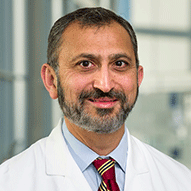Dallas
214-456-6040
Fax: 214-456-6320
Plano
469-497-2501
Fax: 469-497-2507
Park Cities
469-488-7000
Fax: 469-488-7001
214-456-6040
Fax: 214-456-6320
469-497-2501
Fax: 469-497-2507
469-488-7000
Fax: 469-488-7001
Hepatic (liver) cancer is rare in children. The most common mass in younger children is hepatoblastoma. Older adolescents are more likely to be diagnosed with hepatocellular carcinoma, which more readily metastasizes (spreads to other parts of the body).
Other liver tumors children can have are:
Diagnosing liver cancer includes distinguishing them from other non-malignant masses such as hemangiomas, which are the most common benign liver mass. Hemangiomas are most often found in infants less than 6 months old.
Other types of liver malignancies are even rarer:
Because liver cancers are so rare in pediatric patients and often associated with genetic syndromes, the tumors should be managed by a multidisciplinary team of pediatric specialists.
Surgery options range from removal of tumors to total hepatectomy and liver transplant.
Children also may need chemotherapy and radiation therapy, depending on the stage and type of liver tumor.
We will continue to work with patients’ families and community physicians after care to assist you with follow-up and surveillance for recurrence or a second cancer.
Children’s Medical Center is staffed by expert and experienced specialists who are faculty at UT Southwestern Medical Center. The Pauline Allen Gill Center for Cancer and Blood Disorders is a world-class and nationally recognized leader in pediatric cancer research. Our pediatric oncologists, pediatric surgeons and other specialists can manage these rare tumors.














